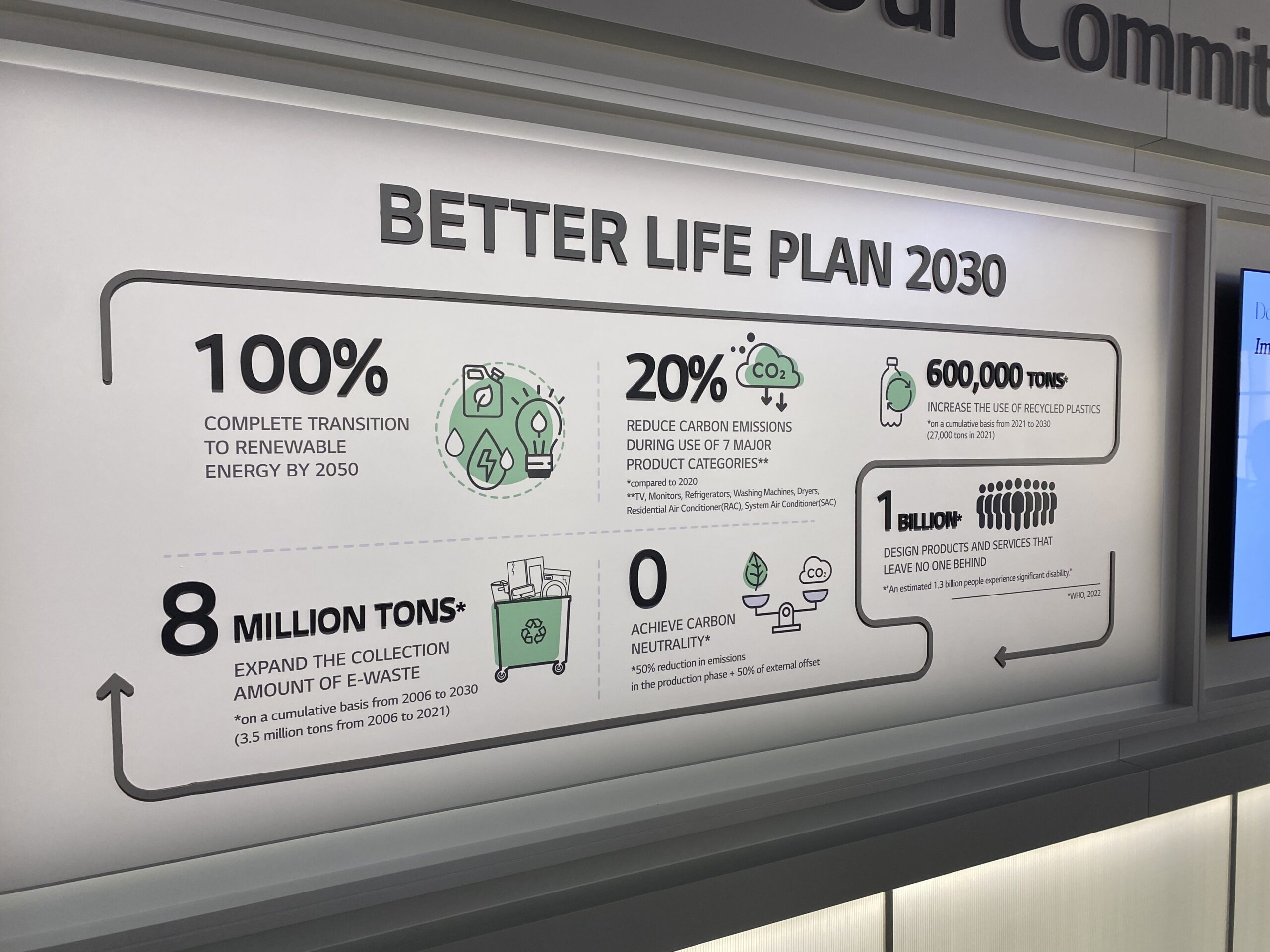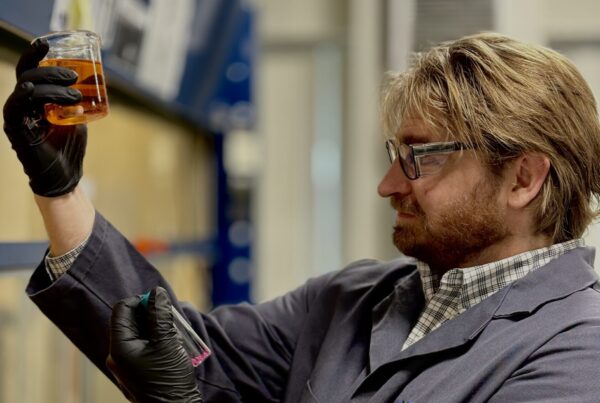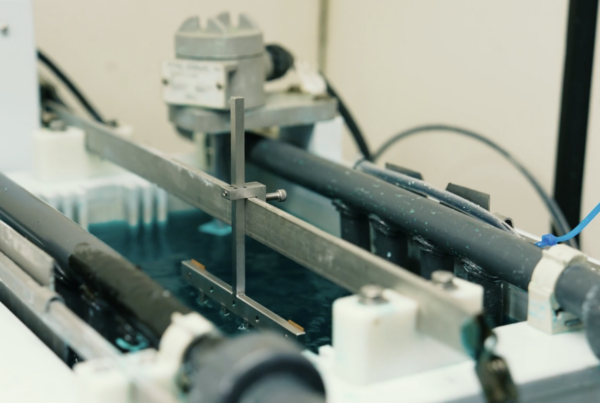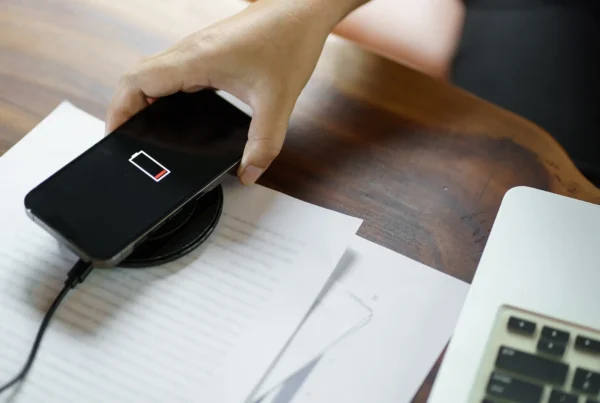The Consumer Electronics Show (CES) is a great forum for forward-thinking engineers to witness the future of sustainable technologies. Recently our team has experienced a much larger market pull for sustainable advanced materials that are safe for the skin. It is no coincidence that the role of nanotechnology in sustainable safe wearables, wireless charging, and electric vehicles was the highlight of this year’s CES showcase.
Contents
Sustainability
An overarching message at CES this year was a trend toward more environmentally friendly products. The buzz around Environmental, Social, and Corporate Governance (ESG) and the investors seeking out these products has led to a surge in companies and technologies to support this effort. As we use more high-speed internet connections in our daily lives, this will become more of a focus across backplane, router, and switch connectors in enterprise data centers. As we build more electronic devices, the environmental impact of mining precious metals becomes more scrutinized. Companies like LG, as shown in the two above photos from CES 2023, are making a public statement about their commitment to environmental protection.
Xtalic technologies help to reduce the precious metals and harmful materials that directly impact ESG. Technologies like XTRONIC® have already reduced the carbon emissions for the datacomm buildout by 78mKgCO2. We are also expanding our manufacturing footprint with a plating partner in China as production begins for a new wearable device OEM. Our products have a low environmental footprint and help our customers lower their footprint. As engineers, we all want to make the world a better place, and Xtalic is proud to lead the pathway.
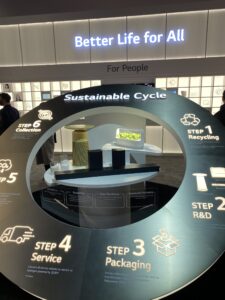 LG Sustainable Cycle – at CES.
LG Sustainable Cycle – at CES.
Sustainable Safe Wearables and Nickel-Free Advanced Materials
The latest wearable electronics were on everyone’s radar, and Garmin’s and Citizen’s large section of smartwatches further reinforced the advantage of nickel-free materials for charging contacts. Many of these products utilize a pin-style charging interface that needs low and stable contact resistance and fast charging. In this case, nickel-free contacts are an area of interest since the charging contacts have direct skin exposure, and there is some potential risk for contact dermatitis from standard materials. Xtalic’s durable LUNA® technology offers a reliable nanostructured silver alternative to nickel. Additionally, our team is working on surface finish solutions that are more sustainable than rhodium finishes. Check out our blog on sustainable materials for safe wearable fashion accessories to learn more.
Our time at CES also made us aware of the opportunities that exist with wearables like electrochromic sunglasses and traditional hearing aids. These applications have potentially long-term skin exposure and can benefit from a hypoallergenic nickel-free solution. Currently, we have wearable device customers utilizing nickel-free Xtalic technology for charging capabilities, but we expect to see faster wireless charging solutions and sustainability become a larger role in the future.
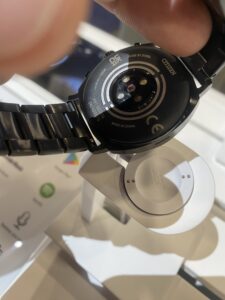 Citizen smartwatch – at CES.
Citizen smartwatch – at CES.
Wireless Charging and Qi2
There was a buzz around CES with the announcement of the upcoming release of the new Qi2 (pronounced chee-2), with the big news that Apple’s Mag-Safe technology will be incorporated into the new Qi2 standard. This will allow for improved alignment between the charging coils and increase overall charging efficiency. Details on the new charging frequencies are still proprietary to the Qi2 standards committee, but an increase in frequency is likely.
Xtalic is busy working on new patent pending wireless charging nanotechnology solutions. We have designed a unique soft magnetic material coating to enhance coupling efficiency and wireless charging speeds in and around the Qi standard operating ranges. We see this new development as a likely option for wireless charging in consumer products like watches, smartphones, and accessories.
Electric Vehicles
CES has evolved to include Electric Vehicle (EV) and E-bike technologies. E-bikes provide a great low-carbon footprint option, especially for short-distance commutes. They are packed with power and have a decent range. There are opportunities for improvement in accessories, lightweighting and reliable power. Lightyear and Sono are working to integrate solar cell charging onto their car bodies.
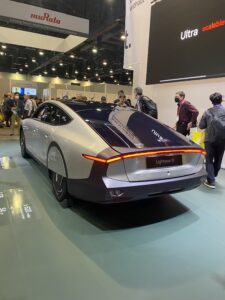 Integrated solar cell charging on an EV – at CES.
Integrated solar cell charging on an EV – at CES.
Verge motorcycles also had an impressive showing with their EV offering, indicating the technology’s adoption across different transportation types. Xtalic continues to develop nanotechnology product offerings to enhance the performance of EVs and deliver more value.
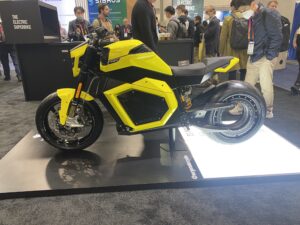 Verge motorcycle – at CES.
Verge motorcycle – at CES.
Connect with us to learn more about Xtalic technologies that enhance the performance of your products.
